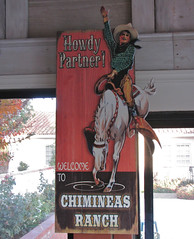
Howdy Partner!
Being my first visit, I had little idea what daylight would bring. But it didn't matter because I was already having a stellar time. I'd just spent 4 hours with the Camera Trap Codger & Fred, wonking on wildlife biology, camera trapping, and any-and-all-things-science (while enjoying an occasional lick on the ear). For an aspiring naturalist, that's practically Nirvana (ear-licks included).
But now we were at the ranch, and it was time to get to work. On ranches, that means sunrise. We chose to honor the tradition, but more because days are short when the sun sets at 5pm, and whispers of rain had us worried about the safety of old, rutted roads.
So, after intros, comfy room setup & raviolis with our most excellent and gracious host Craig - the field biologist with the California Department of Fish & Game (DFG) leading the "expedition" - we prepped trail cams and went to our beds, with visions of kit foxes dancing in our heads (or antlers, in the case of Fred's head).
If I thought the ranch was nice at night, I was even more rewarded by day. It's a stunner. A slice of old Alta California - torn right out of the pulp fiction westerns, full of buttes and canyons and flats and bluffs and springs and ridges. Kinda place that makes you wanna wear spurs. If even just for the cool ching-ching sound they make as you walk. Hey Northface - get working on some!
And as I was to see & learn over our full 2 days of rambling around the ranch, at over 30,000 acres, Chimineas has an amazing range of environs, including oak woodland, yucca obstacle course, juniper forest, annual grassland, saltbush scrub, rocky maybe-cavey jumbles, scruffy chaparral, rugged riparian, perhaps-once-was pond, dusty desert, sandstone/sandbath canyon, and far-far away salt plain. Oh - and comfy bunkhouse too. Note that some of those may be seasonal, and might not be official scientific ecosystem names (or is it biomes now?).
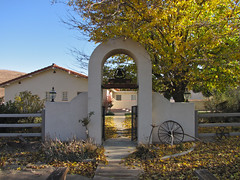
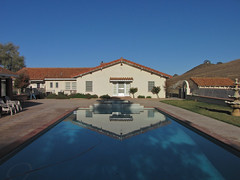
Chimineas entry, ranch house and pool
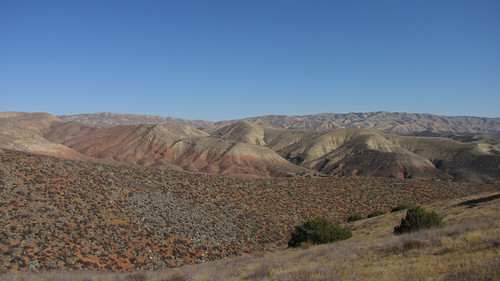
Juniper scrub, yucca-covered ridges and red rock canyons
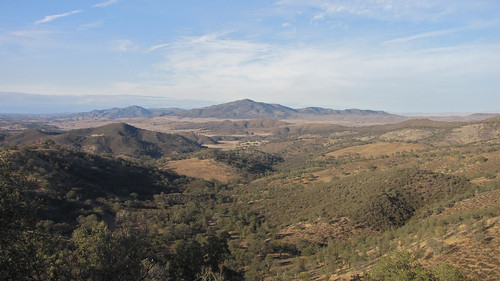
Oak woodlands, chaparral and seasonal creeks
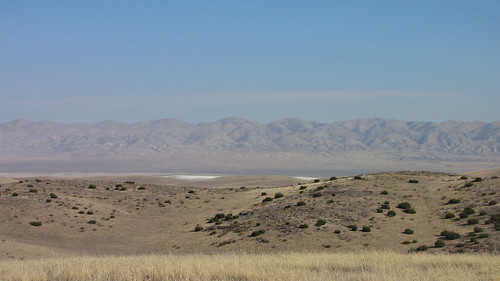
Annual grasslands, rolling hills and salt plains

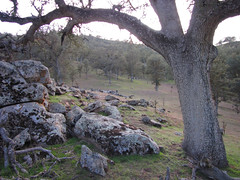
Character snags, craggy oaks and interesting rock jumbles are everywhere
The ranch is part of the Carrizo Plains Ecological Reserve and is all carefully managed with modern conservation techniques by the California Department of Fish & Game. Glad for it too - because the whole bit acts as a wildlife corridor between the 250,000 acre Carrizo Plain National Monument lands and Los Padres National Forest. And, I've heard that wildlife corridors are ideal habitats to find camera trappers...
Speaking of wildlife - it's classic California: coyotes, black bears, cougars, bobcats, foxes, badgers, rabbits, squirrels, kangaroo rats, mule deer, tule elk & pronghorn to name a few mammals (the latter 2 re-introd in the 80's). And there's a bevy of herps, birds and wildflowers.
In just 2 days we saw elk, deer, jack and cottontail rabbits, a coyote and a bobcat (and heard coyotes serenade us at night). We also saw redtails, kestrels, a golden eagle, a long-eared owl, curlews, shrikes, bluebirds and magpies.
A whole range of fascinating snakes & lizards are common, but were already mostly underground by our mid-November visit. We only glimpsed a few late-season fence lizards, and a friendly gopher snake that got off the road for us.

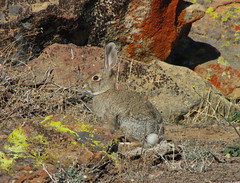

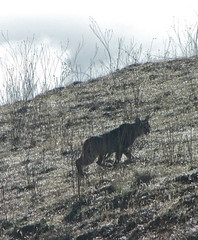
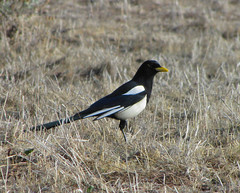

As we tromped around I saw a few wildflowers hanging on, but was told the place really goes off in spring. About 400 plant species have been ID'd on the ranch so far. I really wanna see the Yucca whipplei when it's all blooming. :)
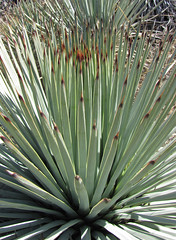

Yucca whipplei, also called Our Lord's Candle
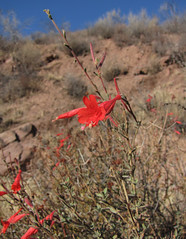
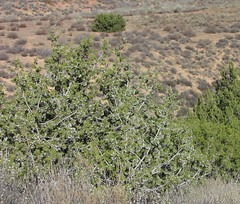
California Fuchsia and Juniper
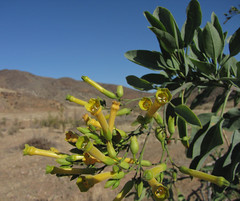
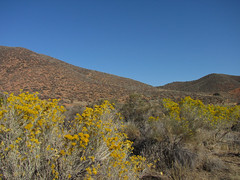
Indian Tobacco and Rabbitbush
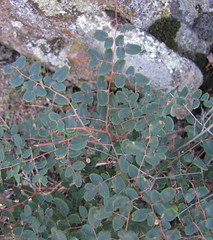
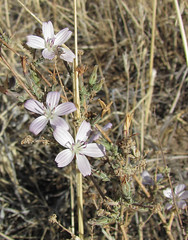
Coffee Fern and Wire Lettuce
We also saw crazy colorful lichens, old rock carvings, and shellfish fossils from way back when these lands were under the ocean (the San Andreas Fault cuts right through the ranch). The place is a geologic garden.

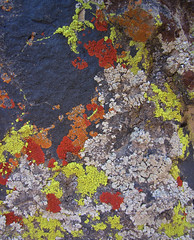
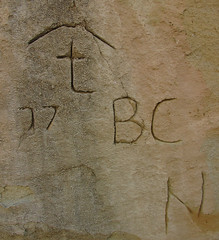
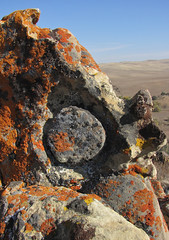
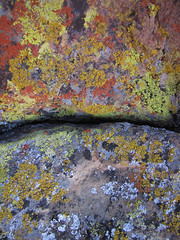
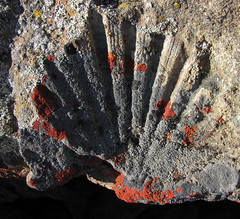
The ranch is public land, so you can come in for hikes and horse rides with a day pass (BYOH). There's still hunting as well (in season, by permit). And some cattle too. I.e., it's still a real ranch in some areas. But there's also lots of science going on - including studies of bats, rattlesnakes & pond turtles, many by Cal Poly. And DFG is encouraging more. Hence the camera trapping survey of the reserve - you gotta know what's around to properly manage, protect & study it.
I think I could fill a book with everything I learned about camera trapping and wildlife biology in the 2 days we were in the field on the ranch. And then there's the stories about Fred's hilarious antler chasing, the knot tying workshop, the delicious stew & pie, and our endless science geeking. But that's not the point of this post. It's just to introduce you to the Chimineas Ranch, because I hope to be seeing and writing about it much, much more.
For those wanting more detail, here's my full set of photos from the Chimineas Ranch.
And here's all my posts on our Chimineas adventures.
===
References:
- Camera Trap Codger - Stories, photos, science & wisdom from Chimineas Ranch
- California Department of Fish & Game - Carrizo Plains Ecological Reserve (w/ permit info)
- California Polytechnic State University - Biological Sciences Department field studies
- Bureau of Land Management - Carrizo Plain National Monument
- The Nature Conservancy - Carrizo Plain National Monument
- Wikipedia - Carrizo Plain
- Outdoor California Magazine, Sept-Oct 2007 - Chimineas' Hidden Oasis

Hey RT, great post. And you're absolutely right. I knew something was missing. We've got to get spurs for next time.
ReplyDeleteThat was a great, rich post. Beautiful pics. It gave a real feel for the place. I'm envious, want to go there.
ReplyDeleteGreat post Ken! Lovely pics too!
ReplyDeleteThanks gang.
ReplyDeleteHugh - lemme know if you wanna join me for the "herpapalooza" volunteer hunt in the spring to survey all the possible species of herps (and there's a bunch) and I'll see if I can get you on the list. We might even have spurs by then. :)